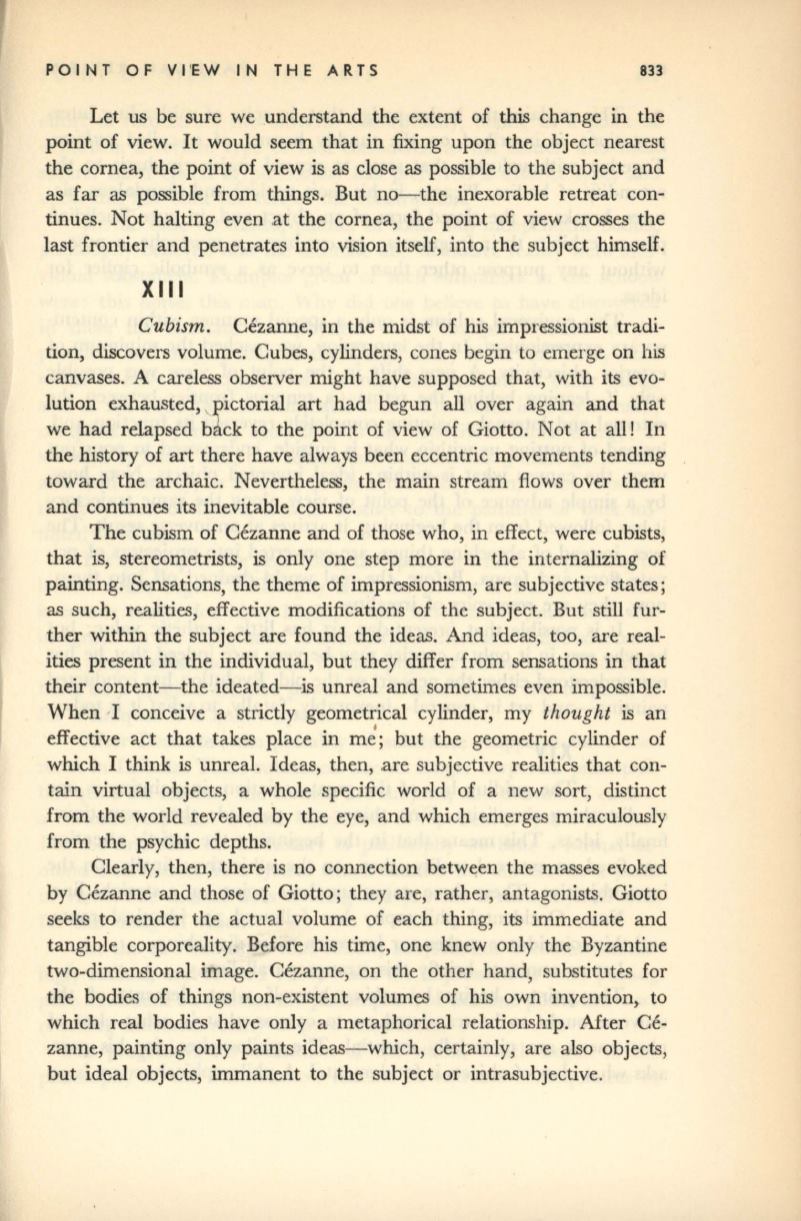
POINT OF VI 'EW IN THE ARTS
833
Let us be sure we understand the extent of this change in the
point of view. It would seem that in fixing upon the object nearest
the cornea, the point of view is as close as possible to the subject and
as far as possible from things. But no- the inexorable retreat con–
tinues. Not halting even at the cornea, the point of view crosses the
last frontier and penetrates into vision itself, into the subject himself.
XIII
Cubism.
Cezanne, in the midst of his impressionist tradi–
tion, discovers volume. Cubes, cylinders, cones begin to emerge on his
canvases. A careless observer might have supposed that, with its evo–
lution exhausted, , ]?ictorial art had begun all over again and that
we had relapsed back to the point of view of Giotto. Not at all! In
the history of art there have always been eccentric movements tending
toward the archaic. Nevertheless, the main stream flows over them
and continues its inevitable course.
The cubism of Cezanne and of those who, in effect, were cubists,
that is, stereometrists, is only one step more in the internalizing of
painting. Sensations, the theme of impressionism, are subjective states;
as such, realities, effective modifications of the subject. But still fur–
ther within the subject are found the ideas. And ideas, too, are real–
ities present in the individual, but they differ from sensations in that
their content- the ideated- is unreal and sometimes even impossible.
When I conceive a strictly geometrical cylinder, my
thought
is an
effective act that takes place in
m~ ;
hut the geometric cylinder of
which I think is unreal. Ideas, then, are subjective realities that con–
tain virtual objects, a whole specific world of a new sort, distinct
from the world revealed by the eye, and which emerges miraculously
from the psychic depths.
Clearly, then, there is no connection between the masses evoked
by Cezanne and those of Giotto; they are, rather, antagonists. Giotto
seeks to render the actual volume of each thing, its immediate and
tangible corporeality. Before his time, one knew only the Byzantine
two-dimensional image. Cezanne, on the other hand, substitutes for
the bodies of things non-existent volumes of his own invention, to
which real bodies have only a metaphorical relationship. Mter
Ce–
zanne, painting only paints ideas- which, certainly, are also objects,
but ideal objects, immanent to the subject or intrasubjective.


